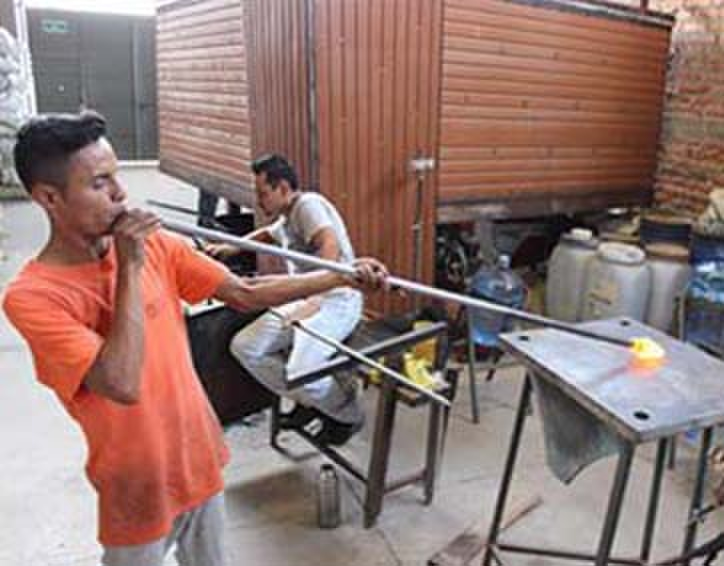The history of Tonalá, Jalisco, in the context of glassblowing, is a fascinating journey that intertwines with the rich artisanal traditions of Mexico. Tonalá, located in the state of Jalisco, is renowned for its vibrant arts and crafts culture, with glassblowing being a significant part of its heritage. Here’s an overview of the history and evolution of glassblowing in Tonalá Mexico:
Pre-Hispanic and Colonial Periods
- Pre-Hispanic Era: Before the arrival of the Spanish, the region that includes present-day Tonalá was home to various indigenous groups known for their pottery and ceramics. While glassblowing as we know it was not present, these early artisans laid the groundwork for a culture deeply rooted in craftsmanship.
- Colonial Influence: With the Spanish conquest in the 16th century, European glassblowing techniques were introduced to Mexico. Spanish craftsmen brought their knowledge and expertise, which began to influence local artisans.
19th and Early 20th Centuries
- Early Adoption: By the 19th century, glassblowing had become more established in Mexico, particularly in areas like Puebla and Jalisco. Tonalá, with its rich tradition of craftsmanship, became a hub for this evolving art form.
- Artisan Communities: During this period, artisan communities in Tonalá began to adopt and adapt European glassblowing techniques, merging them with local artistic styles and cultural themes. This fusion led to unique creations that reflected both Mexican heritage and European influences.
Mid-20th Century to Present
- Revival and Growth: The mid-20th century saw a revival of traditional Mexican arts and crafts, including glassblowing. Artisans in Tonalá played a crucial role in this resurgence, creating pieces that gained national and international recognition.
- Innovation and Tradition: Today, Tonalá is known for its vibrant glassblowing industry. Artisans continue to innovate, blending traditional methods with modern techniques. This has led to a thriving market for handcrafted glass items, from decorative pieces to functional wares.
- Cultural Significance: Glassblowing in Tonalá is more than just a craft; it is a cultural expression. Workshops and studios in the town are often family-run, with techniques and skills passed down through generations. This continuity helps preserve the unique artistic identity of the region.
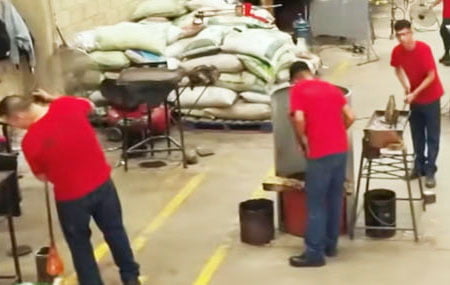
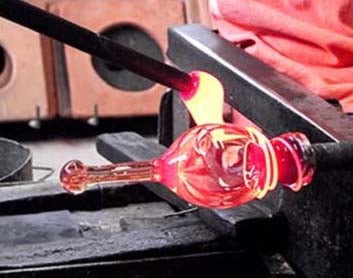
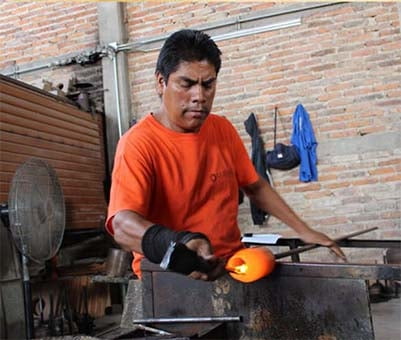
Key Characteristics
- Techniques: Traditional techniques such as blowing, molding, and free-form shaping are commonly used. Each piece is often hand-decorated, showcasing intricate designs and vibrant colors.
- Materials: Local artisans typically use recycled glass, demonstrating a commitment to sustainability and resourcefulness.
- Designs: The designs often reflect Mexican culture, with motifs inspired by nature, folklore, and everyday life. Common themes include animals, plants, and traditional Mexican symbols.
Cultural Impact
- Tourism and Economy: Glassblowing has become a significant draw for tourism in Tonalá. Visitors from around the world come to see artisans at work, purchase unique glass items, and learn about the history and techniques of this craft.
- Educational Efforts: There are also educational initiatives to preserve and teach glassblowing. Workshops and apprenticeships help ensure that new generations of artisans can continue the tradition.
Conclusion
The history of glassblowing in Tonalá, Jalisco, is a testament to the region’s rich artistic heritage and its ability to adapt and thrive through cultural exchanges. From its colonial roots to its present-day prominence, glassblowing in Tonalá remains a vital and dynamic part of Mexico’s artisanal landscape.
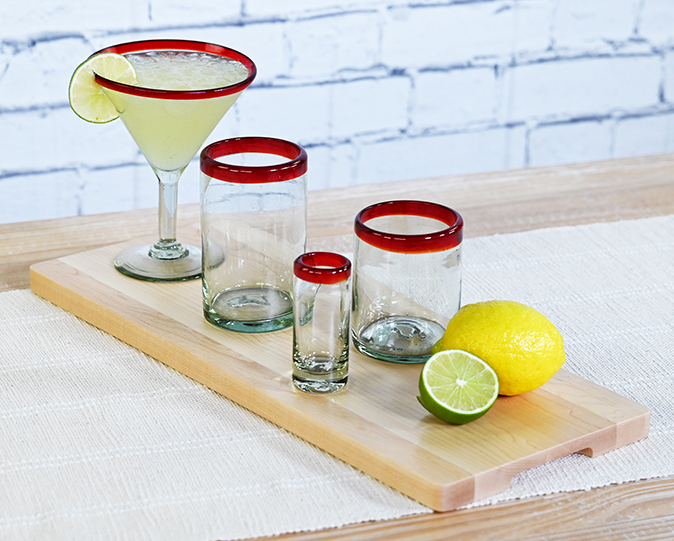
Evolution of Glassblowing Techniques and Styles
Colonial to Early 20th Century
- Early Techniques: The initial glassblowing techniques introduced by the Spanish were relatively simple and focused on practical items such as bottles, jars, and basic glassware. These techniques gradually evolved as local artisans experimented and infused their creativity into the process.
- Artistic Fusion: Over time, the glassblowing techniques began to blend with traditional Mexican artistic styles. Artisans incorporated indigenous motifs, patterns, and vibrant colors into their glass creations, making the pieces uniquely Mexican.
Mid to Late 20th Century
- Post-Revolutionary Mexico: After the Mexican Revolution (1910-1920), there was a renewed interest in promoting and preserving Mexican culture and arts. This cultural renaissance included a focus on traditional crafts, leading to increased support for glassblowing in regions like Tonalá.
- Artistic Renaissance: The mid-20th century marked a period of significant growth and innovation in glassblowing. Artisans in Tonalá began to explore more complex designs and techniques, such as etched glass, painted glass, and blown glass sculptures. This period also saw the establishment of numerous workshops and studios dedicated to the craft.
Prominent Glassblowing Figures and Workshops
Influential Artisans
- Carlos Villanueva: A prominent figure in Tonalá’s glassblowing history, Villanueva is known for his innovative techniques and dedication to preserving traditional methods. His workshop has trained numerous artisans and contributed significantly to the craft’s evolution.
- The Huerta Family: Another influential family in Tonalá’s glassblowing scene, the Huertas have been producing high-quality glass pieces for generations. Their work is renowned for its intricate designs and vibrant colors.
Notable Glass Workshops
- El Arte del Vidrio: One of the most well-known workshops in Tonalá, El Arte del Vidrio has become synonymous with quality and innovation in glassblowing. They offer tours and demonstrations, allowing visitors to witness the intricate process firsthand.
- Vidrio Soplado Mexicano: This workshop focuses on traditional techniques and sustainability, using recycled glass to create their pieces. Their work emphasizes environmental responsibility while maintaining high artistic standards.
Modern-Day Glassblowing in Tonalá Mexico
Glassblowing Techniques and Materials in Tonalá Mexico
- Recycled Glass: Modern glassblowing in Tonalá often uses recycled glass, which is melted down and repurposed. This practice not only supports environmental sustainability but also adds a unique character to each piece.
- Innovative Designs: Today’s artisans experiment with a variety of techniques, including sandblasting, engraving, and fusing glass. These methods allow for the creation of both traditional and contemporary designs, appealing to a broad audience.
Cultural and Economic Impact of Glassblowing in Tonalá Mexico
- Tourism: Glassblowing has become a significant attraction in Tonalá, drawing tourists from around the world. Visitors can tour workshops, observe artisans at work, and purchase unique glass items. This influx of tourists supports the local economy and helps sustain the craft.
- Economic Contribution: The glassblowing industry in Tonalá provides employment for many local residents. From artisans to shop owners and tour guides, the craft supports a wide range of jobs in the community.
Preservation and Education of Glassblowing
- Apprenticeships: Many workshops offer apprenticeship programs, ensuring that the skills and techniques of glassblowing are passed down to the next generation. These programs are crucial for preserving the craft’s heritage and fostering new talent.
- Educational Programs: Local schools and cultural institutions often collaborate with glassblowing workshops to offer educational programs. These initiatives help raise awareness about the craft and inspire young people to pursue careers in glassblowing.
Future of Glassblowing in Tonalá Mexico
Challenges of Glassblowing in Mexico
- Market Competition: The global market for glassware includes mass-produced items that can be cheaper than handmade pieces. Artisans in Tonalá must compete with these products while emphasizing the unique value of their handcrafted work.
- Resource Management: Ensuring a steady supply of high-quality recycled glass and managing the environmental impact of glassblowing are ongoing challenges.
Opportunities for Glassblowing
- Global Market: There is a growing appreciation for handmade, artisanal products worldwide. Tonalá’s glassblowers can capitalize on this trend by marketing their unique, high-quality pieces to international buyers.
- Cultural Preservation: Efforts to preserve and promote traditional crafts are gaining momentum. Organizations and governments are increasingly recognizing the importance of supporting artisanal communities, providing opportunities for growth and sustainability.
Conclusion
Glassblowing in Mexico, is a vibrant and evolving tradition that reflects the region’s rich cultural heritage. From its colonial roots to its modern-day innovations, the craft has continually adapted and thrived. Today, Tonalá’s glassblowers are not only preserving their artisanal heritage but also pushing the boundaries of what can be achieved with glass, ensuring that this beautiful and intricate art form remains a vital part of Mexico’s cultural landscape.
Tags: History of Glassblowing in Mexico, History of Glassblowing in Tonala, Mexican Glassware, Recycled Mexican Glassware

